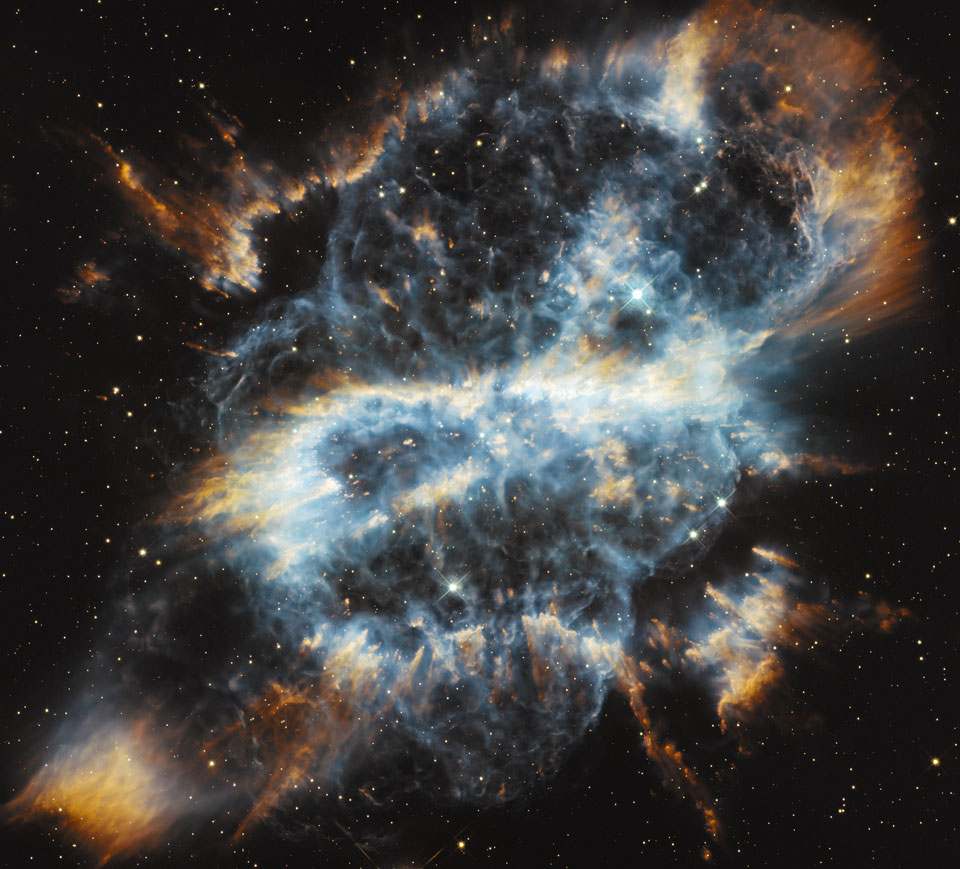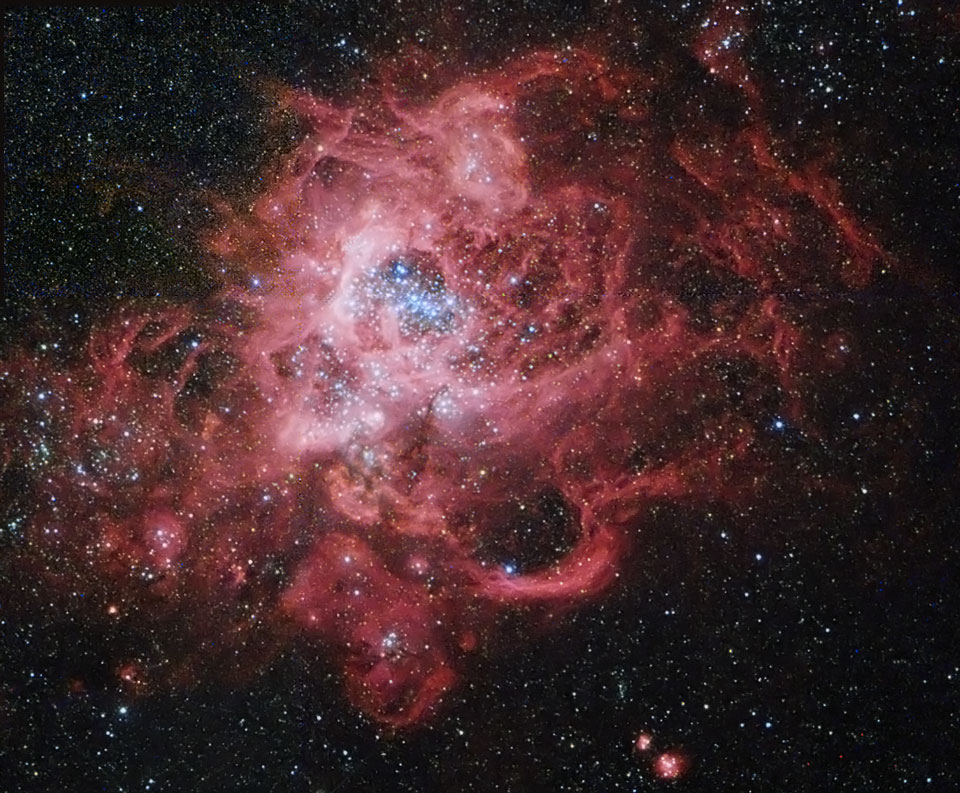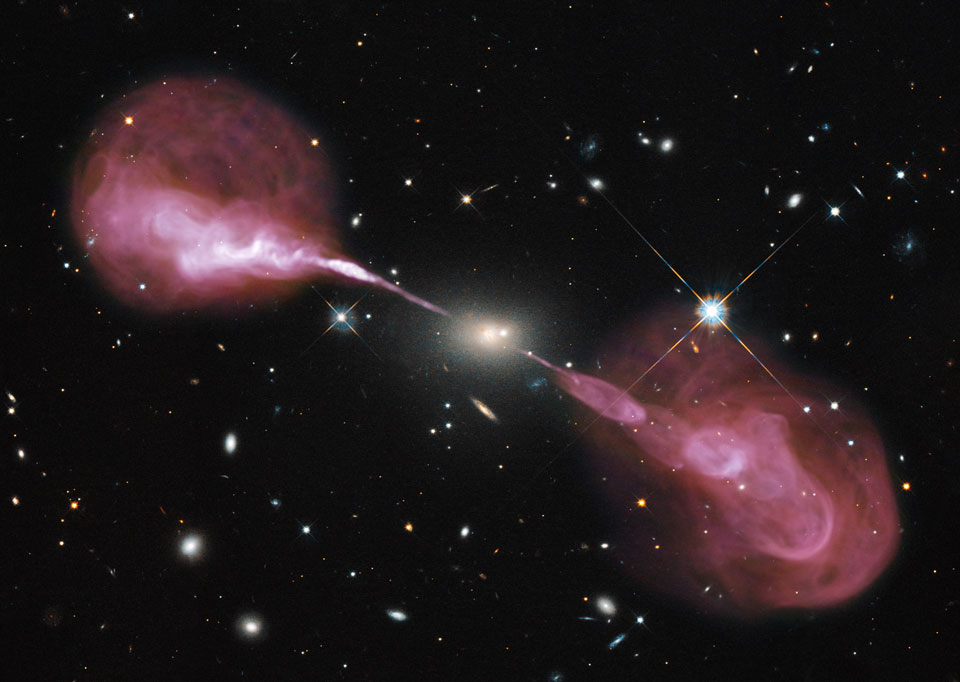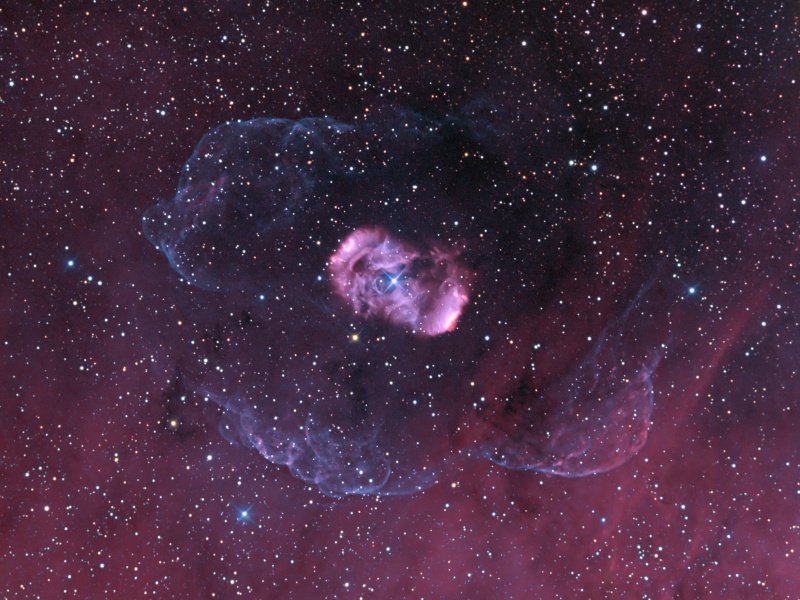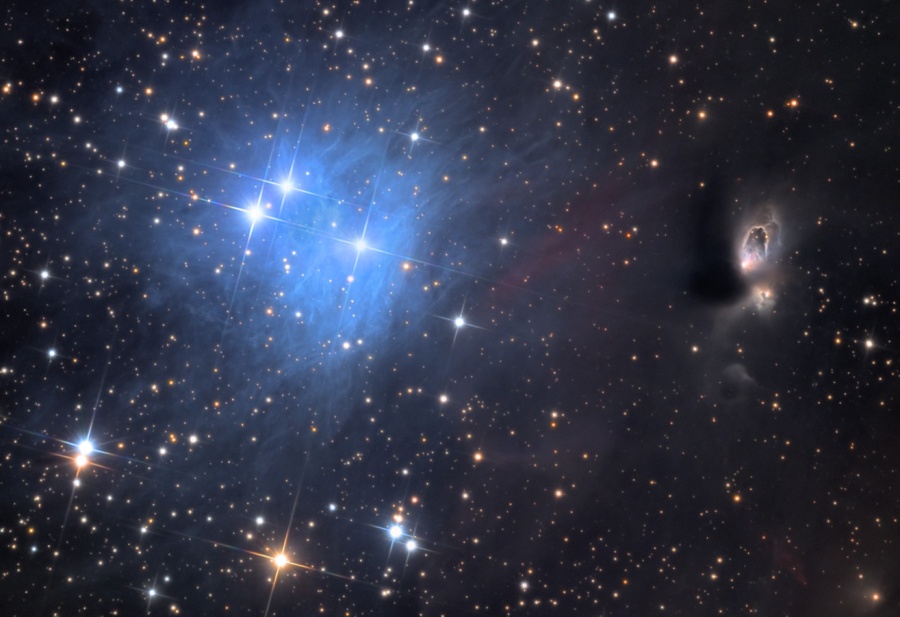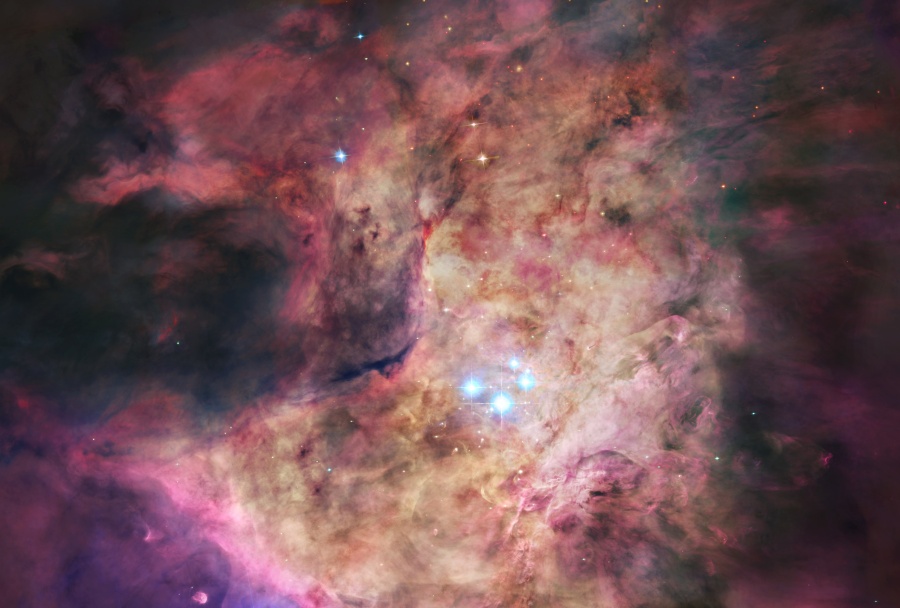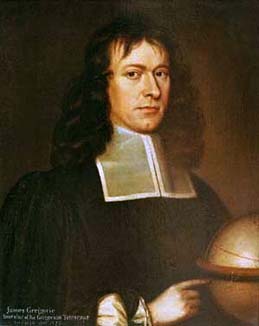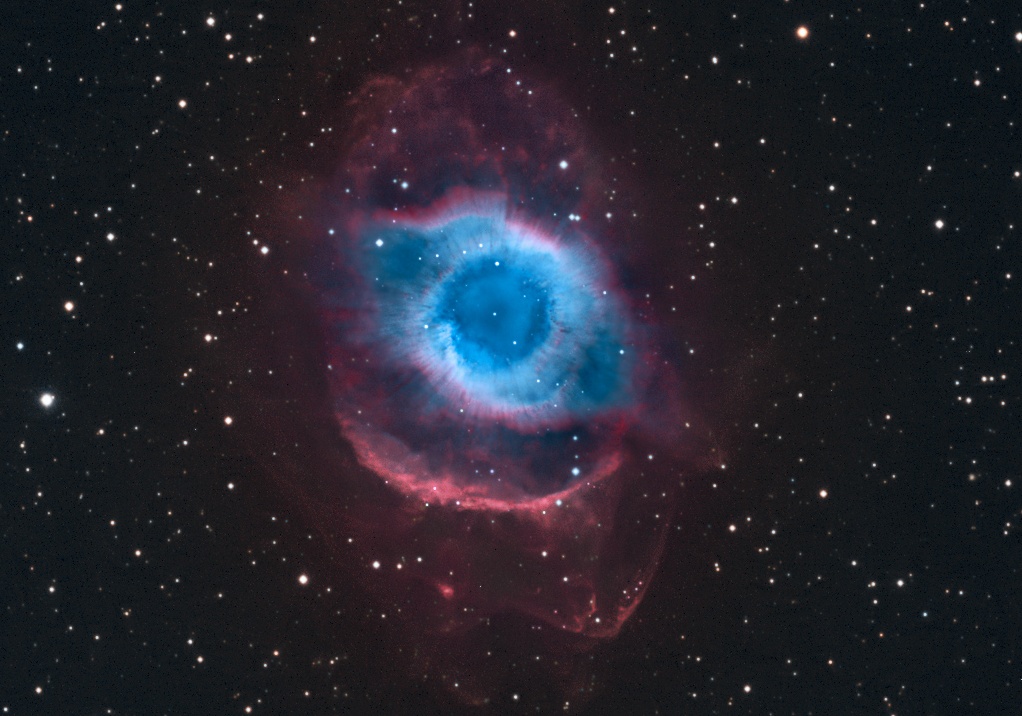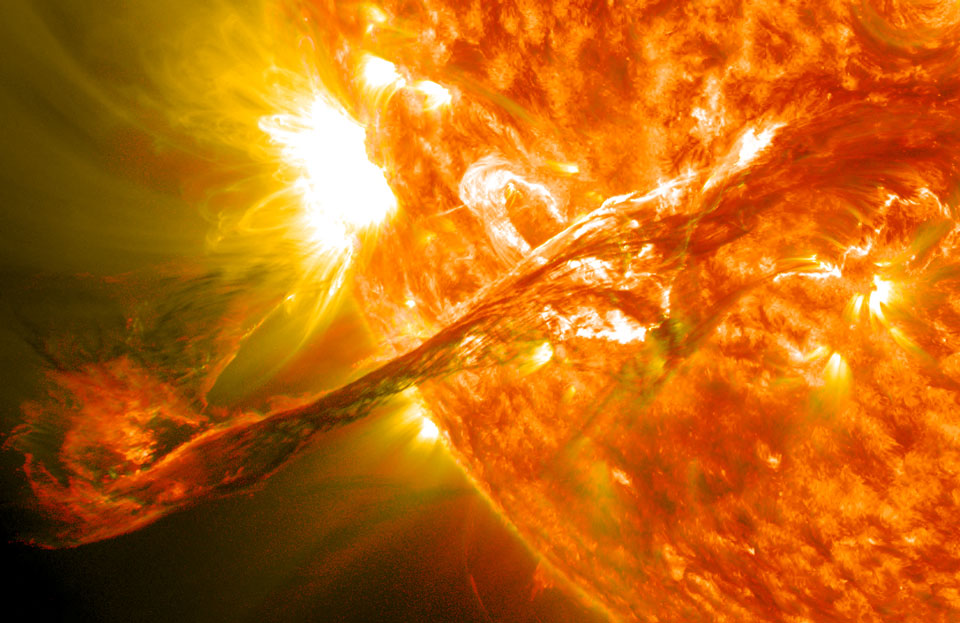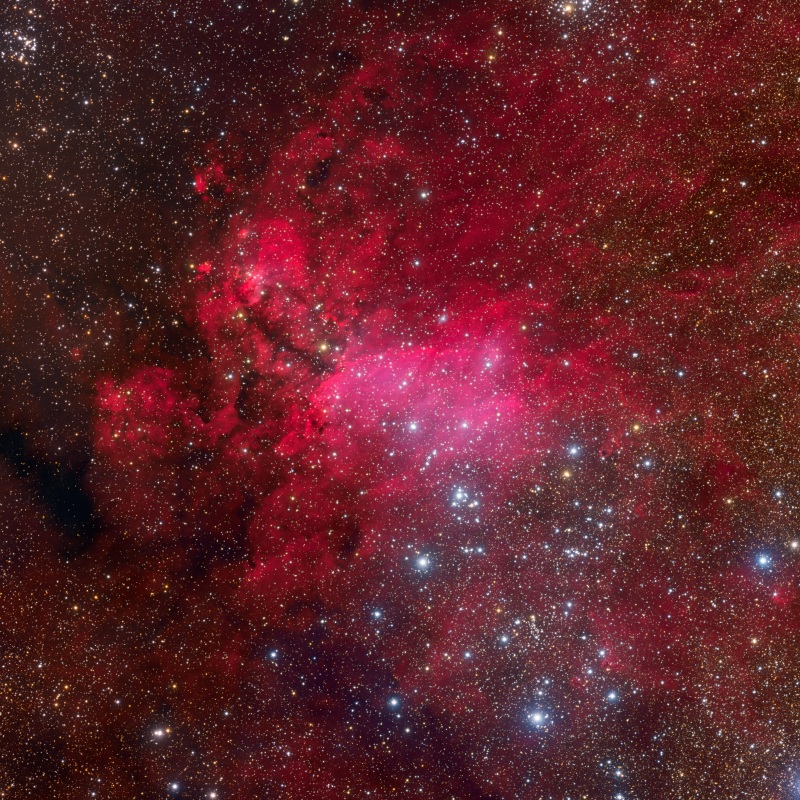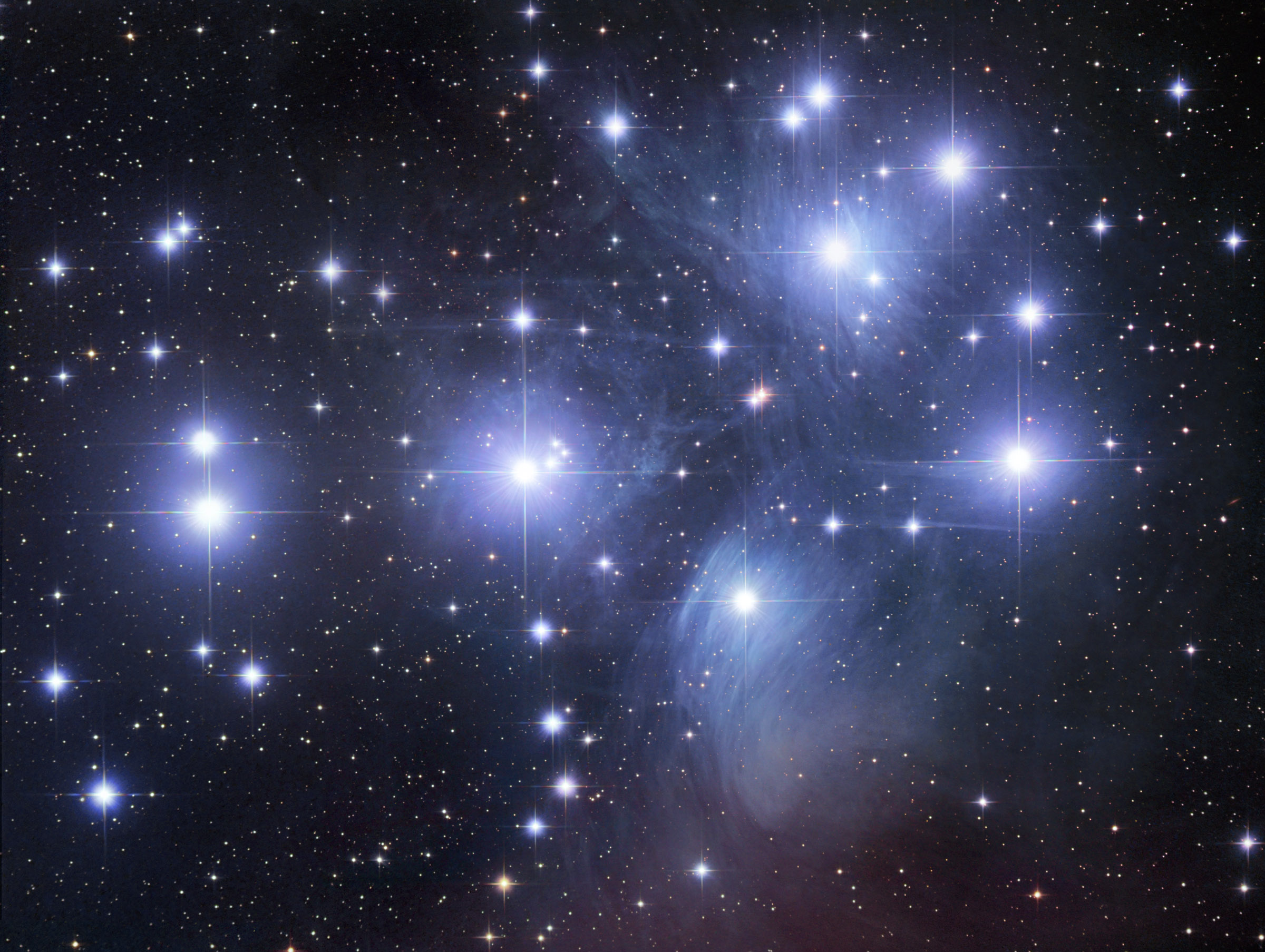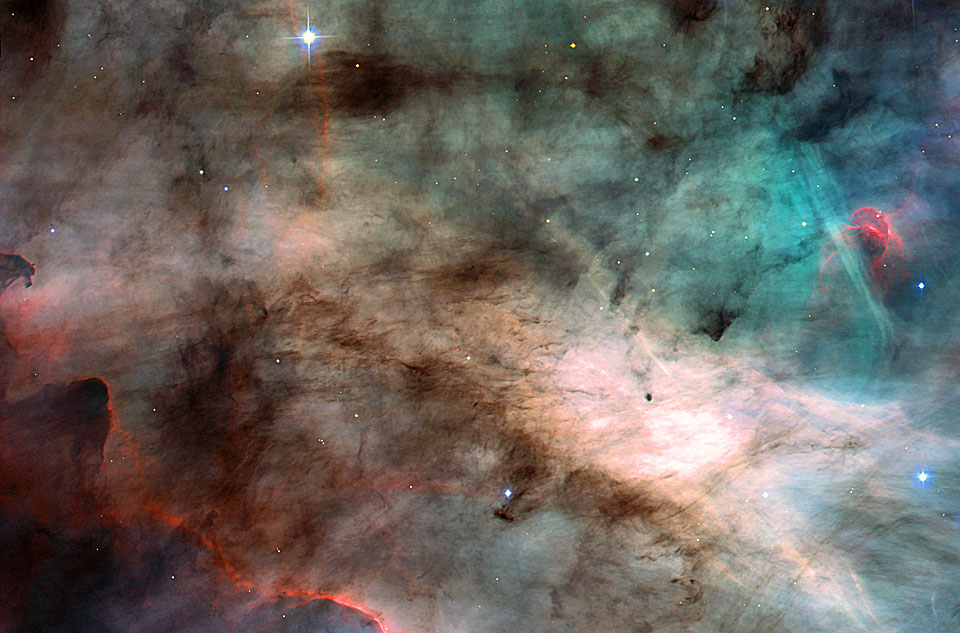Friday, December 21, 2012
Apod 2.6
This is a complex nebula. Scientists aren't quite sure what has caused this star to expand into such an unusual shape. Nebulae normally expand in normal shapes like spheres, double lobes, rings, or helices. Astronomers believe that this dying star is part of a binary star system with a precessing symmetry axis.
Thursday, December 20, 2012
Biography Sources
http://messier.seds.org/xtra/Bios/wcbond.html
http://www.britannica.com/EBchecked/topic/72793/William-Cranch-Bond
http://www.britannica.com/EBchecked/topic/72793/William-Cranch-Bond
Friday, December 14, 2012
Apod 2.5
This is a picture of a gas cloud created by the M33 galaxy. The gas cloud is composed of dense internal knots which form stars. The gas cloud is so large, that is is able to form a global cluster.
Friday, December 7, 2012
Apod 2.4
This is an image of the Hercules A galaxy. It contains an active super-massive blackhole at its center. Astronomers believe that it is the black hole that causes the "jets" shown in this image. Some of these plasma "jets" can be over one million light years long. Hercules A's central galaxy, 3C 348 is one thousand times bigger than our Milky Way galaxy.
Tuesday, December 4, 2012
Objects for Stargaze
Altair
Polaris
Algol
Fomalhaut
Double Cluster
M31
M42
M81
Andromedae
61 Cygni
Polaris
Algol
Fomalhaut
Double Cluster
M31
M42
M81
Andromedae
61 Cygni
Thursday, November 29, 2012
Astronomy Quizes
http://www.astronomyquiz.info/a-z.html
Not all of these quizes are relevant, but some of them are helpful.
They're also a bit short.
http://www.factmonster.com/quizzes/constellation/1.html
http://www.softschools.com/quizzes/science/stars_and_constellations/quiz816.html
Not all of these quizes are relevant, but some of them are helpful.
They're also a bit short.
http://www.factmonster.com/quizzes/constellation/1.html
http://www.softschools.com/quizzes/science/stars_and_constellations/quiz816.html
Friday, November 9, 2012
Apod 2.2
This nebula, NGC 6164, was created by a rare O-type star, which was 40 times larger than the sun. The star in the center of this image is only 3 million years old. When the star's age doubles, it will explode and create a supernova explosion. The blue halo surrounding the star is caused by an earlier phase of the O star in the center.
APOD 2.3
This is a picture of some cosmic clouds inside the emission nebula IC 1805. The clouds have been modified and shaped by winds and radiation from stars in the star cluster Melotte 15, which is about 1.5 million years old. This nebula is 7,500 light years away from Earth.
Friday, November 2, 2012
Apod 2.1
This is a picture of a cosmic cloud inside the van den Bergh Catalog of stars surrounded by reflection nebulae. The blue color of the cloud is caused by the same process that gives Earth its blue skies. The catalog that contains this cloud is around 5 light years across.
Sunday, October 21, 2012
Apod 1.8
This picture takes place inside of the Orion Nebula, which is approximately three-million years old. The cluster of four bright-blue stars in the center of this image is called The Trapezium. The circular shape the stars create has a radius of almost one and half light years. Recent studies lead to the idea that in its earlier years, the Orion Nebula formed a black hole that was 100 times more massive than our sun. If this study is confirmed, the Orion Nebula will house the closest black hole to Earth, which is 1500 light years away.
Apod 1.7
This is a picture of the horsehead nebula,also known as Barnard 33, which is part of Orion. It is part of a large molecular cloud. The nebula's odd shape was first recorded in the 1800s. The dark parts of the nebula are caused by dust and the reddish glow originates from hydrogen gas that has been ionzed by the star Sigma Orionis.
Observations
Date: October 10, 2012
Time: 8:00 - 10:00 PM
Place: Blackburn Point
Sky Conditions: Clear
Instruments: Mr. Percival's Telescope, Naked eye, Binoculars
Bright Stars noted: Vega, Deneb, Altair, Thuban
Constellations noted: Cassiopeia, Hercules, Pegasus, Aquila, Scorpius
Binary Stars: Epsilon Lyrae, Albireo
Other:
The Milky Way very faintly visible
International space station was seen for about 5 minutes
Date: October 12th, 2012
Time: 9:00 - 10:00 PM
Place: Siesta Key
Sky Conditions: Clear
Instruments: Naked Eye
Bright Stars: Polaris, Altair
Constelations: Aquila, Cassiopeia, Orion
Date: October 13th, 2012
Time: 6:00 - 7:00 AM
Place: Siesta Key
Sky Conditions: Clear
Instruments: Naked Eye
Tried to get some observations in before school. Jupiter was extremely bright and easy to see. Also saw Orion's belt and Polaris. Not much else was visible because of light polution.
Date: October 15th, 2012
Time: 9:00 - 10:00 PM
Place: Siesta Key
Sky Conditions: Clear
Instruments: Naked Eye
Bright Stars: Vega, Altair, and Deneb
Constelations: Cygnus, Lyra, and Aquila
Date: October 21st, 2012
Time: 2:00 - 3:00 AM
Place: Siesta Key (Glebe Park)
Sky Conditions: Clear
Instruments: Naked Eye
Watched Orionid Meteor Shower
Was able to see Orion, Jupiter, and Orion's belt.
Time: 8:00 - 10:00 PM
Place: Blackburn Point
Sky Conditions: Clear
Instruments: Mr. Percival's Telescope, Naked eye, Binoculars
Bright Stars noted: Vega, Deneb, Altair, Thuban
Constellations noted: Cassiopeia, Hercules, Pegasus, Aquila, Scorpius
Binary Stars: Epsilon Lyrae, Albireo
Other:
The Milky Way very faintly visible
International space station was seen for about 5 minutes
Date: October 12th, 2012
Time: 9:00 - 10:00 PM
Place: Siesta Key
Sky Conditions: Clear
Instruments: Naked Eye
Bright Stars: Polaris, Altair
Constelations: Aquila, Cassiopeia, Orion
Date: October 13th, 2012
Time: 6:00 - 7:00 AM
Place: Siesta Key
Sky Conditions: Clear
Instruments: Naked Eye
Tried to get some observations in before school. Jupiter was extremely bright and easy to see. Also saw Orion's belt and Polaris. Not much else was visible because of light polution.
Date: October 15th, 2012
Time: 9:00 - 10:00 PM
Place: Siesta Key
Sky Conditions: Clear
Instruments: Naked Eye
Bright Stars: Vega, Altair, and Deneb
Constelations: Cygnus, Lyra, and Aquila
Date: October 21st, 2012
Time: 2:00 - 3:00 AM
Place: Siesta Key (Glebe Park)
Sky Conditions: Clear
Instruments: Naked Eye
Watched Orionid Meteor Shower
Was able to see Orion, Jupiter, and Orion's belt.
Friday, October 12, 2012
James Gregory
James Gregory, a citizen of Scotland, was born in 1638 and died in 1675. He was the third son of John Gregory and Janet Anderson and was born in Manse of Drumoak. In his early years, he was home schooled by his mother, who influenced his love for mathematics. He graduated from Marischal College in 1657.
During his travels to London in 1663, he met John Collins and Robert Moray, a founder of the Royal Society. In 1664, he traveled to the Venetian Republic to be taught by Stefano Angeli, a professor of philosophy. At the end of his studies in 1668, Gregory returned to London and was allowed into the Royal Society. He was the first Regius Chair of Mathematics. After working as a professor at University of St. Andres and University of Edinburgh, he met his wife, Marry Jameson.
James Gregory's biggest contribution to astronomy was definitely the Gregorian Telescope, created by Gregory in 1663. Unlike its predecessor, the refracting telescope, Gregory's reflecting telescope did not suffer from spherical aberration or chromatic aberration, IE distortion or color issues. His telescope remained a design for almost ten years until Robert Hooke, an oxford physicist, actually built the telescope. Gregory's style of reflecting telescope is not used in modern times, but it was a tremendous technological improvement during his time.
Works cited:
Chambers, Robert. "Page 536." A Biographical Dictionary of Eminent Scotsmen,. London: Blackie and Son, 1835. N. pag. Print.
"James Gregory (1638-1675)." James Gregory (1638-1675). N.p., n.d. Web. 12 Oct. 2012. <http://www-ah.st-andrews.ac.uk/mgstud/reflect/gregory.html>.
"James Gregory." Gregory Biography. N.p., n.d. Web. 28 Sept. 2012. <http://www-groups.dcs.st-and.ac.uk/history/Biographies/Gregory.html>.
"James Gregory (Scottish Mathematician and Astronomer)." Encyclopedia Britannica Online. Encyclopedia Britannica, n.d. Web. 28 Sept. 2012. <http://www.britannica.com/EBchecked/topic/245544/James-Gregory>.
Thursday, October 4, 2012
Apod 1.6
This is a picture of the star, Aquarius. It is seven hundred light years away from Earth. As this star continues to die, it produces The Helix Nebula. The bright-blue center region is three light years across. The nebula is six light years across in total.
Sunday, September 30, 2012
Apod 1.5
The bright star in the top right corner of this picture is called Markab. This star is inside of the constellation Pegasus. The blue dots in this scene are called Blue Reflection Nebulae. The area of the universe depicted in this picture is known to be full of molecular clouds.
Friday, September 28, 2012
James Gregory Sources
"James Gregory." Gregory Biography. N.p., n.d. Web. 28 Sept. 2012. <http://www-groups.dcs.st-and.ac.uk/history/Biographies/Gregory.html>.
"James Gregory (Scottish Mathematician and Astronomer)." Encyclopedia Britannica Online. Encyclopedia Britannica, n.d. Web. 28 Sept. 2012. <http://www.britannica.com/EBchecked/topic/245544/James-Gregory>.
Sunday, September 23, 2012
Apod 1.4
This is a picture of a solar filament erupting. When the sun throws filaments into space, it produces a Coronal Mass Ejection (CME). The sun's magnetic field holds in the filaments and randomly releases them.When the sun does this, Earth normally experiences an increase in an increase of visible auroras.
Friday, September 14, 2012
APOD 1.3
This is a picture of nebula IC4628, also called Gum 56 (after Colin Stanley Gum), or The Prawn Nebula. It is located in the tail of the constellation Scorpius. Giant stars that are close to the nebula form the glow in the picture by stripping electrons from atoms with their strong heat. As the separated electrons attach back to the atoms, they produce the glow. The entire galaxy is 6,000 light years across, but this picture represents about 250 light years.
Friday, September 7, 2012
Apod 1.2
This is a picture of the star cluster Pleiades, also known as "The Seven Sisters" and M45. The blue swirls surrounding some of the stars are "blue reflection nebulae". It is one of the brightest and closest open star clusters. The Pleiades contains more than 3,000 stars and is almost 4,000 light years away, but it is only 13 light years across. Brown dwarfs can also be found inside this cluster.
Sunday, September 2, 2012
Apod 1.1
This is a picture taken inside of the Omega Nebula, which is around 5,000 lightyears away and 3,000 times the length of the Solar System. It was taken by the Hubble Space Telescope. The dots of light scattered throughout the photo are relatively young stars. The different colors and streaks in the image are composed of dust from supernova explosions and gas clouds formed by the radiation from massive nearby stars.
Subscribe to:
Comments (Atom)
